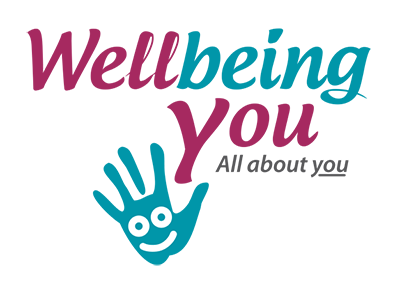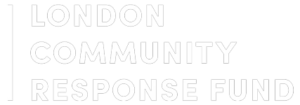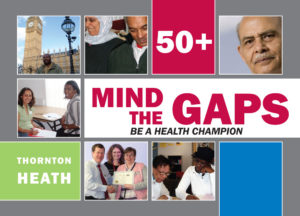
That flier started it all in 2011. I read through it and when I got to the part that asked ‘Do you want to help people to live healthy active later lives’ the passion I have always had to support people to address their health challenges immediately triggered within me. I immediately contacted Paulene who was leading the training, got the application form, completed and submitted it. After attending an interesting interview, I was accepted and started attending lectures.
During the orientation it was explained that there were two requirements for successful completion of the training, one was sitting for an examination on the Royal Society of Public Health Understanding Health Improvement and the other was for each candidate to develop and implement a project that addressed an identified problem among people aged over 50 years in the Thornton Health area that contributed towards health inequalities.
My scientific knowledge quietly advised that the right way to find out the cause of health inequalities was to investigate.
So from reading various reports and anecdotal evidence it was discovered that generally people aged over 50 years felt they are not respected and are at the mercy of GPs and other clinicians. Further they felt they were not given the one to one attention they deserve as GPs seemed to consult more with their computers. These make communication difficult resulting in some not being able to explain their ailments while others forgot what they had gone to consult about and end up leaving the surgery without getting the quality care that they need. With those findings it was concluded that lack of communication is one of the causes of health inequalities. The project was then born
AIM OF PROJECT
The main aim of the project was to develop a tool that would improve communication and facilitate good working relationship and partnership between patients and their GPs, nurse and other clinicians.. It would encourage patients to take more responsibilities for their health and wellbeing. It also addresses three key elements that are vital for transformative change to take place in any process.
Firstly it would strengthen the patient’s confidence to prepare for their visit with the doctor or nurse, do a self-assessment of their health status and write down the questions they would want to ask during their visit. Provision is made for them or their carers or friends to make notes during and after the visit.
Secondly by participating fully during the consultation and understanding what their illness and treatment entail, patients with the help of their carers or friends where necessary can act as self-advocates for the quality care they need and joint decision-making. They would be empowered to address any misunderstanding that may arise during consultations. Hopefully this would reduce the number of patient complaints as well as the time and bureaucracy spent to address them
Thirdly the tool would recognise the importance of networking and linking up with voluntary and community groups that could enhance the healing and wellbeing processes and provide details of possible groups that could provide further support.
Developing the Tool
So as not to reinvent the wheel, a careful search identified the Welsh Epilepsy Unit Question Prompt Sheet that was already in use and permission was obtained from its author Dr Paul Kinnersley, then Professor Cochrane Institute of Primary Care and Public Health, The Medical School, Cardiff University for it to be adapted. Several drafts of the booklet were developed in consultation with key health professionals and cross section of Croydon residents.
An advanced draft was pre-tested at a Health Commissioning event in January 2012, Chaired by Dr Agnelo Fernandez that was well attended by various stakeholders. who were very generous with their comments and suggestions. In one of the subgroups at that meeting the question was asked
‘Does anyone have anything to sell?’ I then stood up and shook my draft in the air. One initial suggestion was that the tool be made available for use by everyone and not restricted to people aged over 50 years. Their ideas were used to develop the final format for the first edition. Seeing that the tool was in line with its ethos of “Health in your own hands”, Croydon Shadow Healthwatch adopted it and applied resources towards design and publication. It was then launched at their End of Year Show Case event on 22nd April 2012.
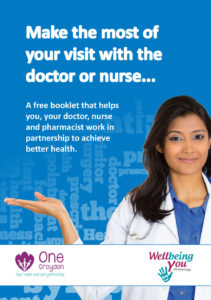
Limited copies were distributed and a second edition was published in June to correct few errors and incorporate initial feedback received from stakeholders.
Edition 2 of the tool was promoted through different channels including the Shadow Healthwatch e-network newsletters, health fairs and forums, and presentations made to various community groups to explain its aims, use and importance of completing the feedback form. Copies were put on display in libraries, GP Surgeries, Out-Patient Clinic at the Croydon University Hospital and community centres.
OUTCOMES at the time in 2011
- The tool was so well received that over 20 organisations and public services called in to request for a talk to be given or a stall to be set up at their planned events.
- The usefulness of the tool and ways to further promote it were discussed at meetings of the “Reducing inequalities among vulnerable groups” one of the Shadow Healthwatch Task Groups.
- Recommendation was made in the Legacy Report for continuation of support of the project by the new Local Healthwatch Croydon.
- The project also helped raise the profile of Shadow Healthwatch Pathfinder around Croydon and beyond.
- Interested medical practitioners have held one to one discussion with Sylvia on how to test the tool’s effectiveness and how the feedback could be used to develop Edition 3
LEARNING POINTS
Contrary to criticisms of local people always complaining about problems and not wanting to help solve them, this project has demonstrated that if given the necessary support local people could proffer practical solutions to practical problems that affect them.
The time taken initially by various stakeholders to compile comments and send them either by email, by post or verbally, enhanced its ownership and is a manifestation that when given the opportunity stakeholders will sacrifice their time to add their voices to a worthy process that they can identify with. This made the GP Partnership Tool, “How to make the most of your visit with your doctor or nurse”, the people’s tool.
While the channels used to disseminate the booklets were good, it would have worked better if that process had been closely monitored and steps put in place for the return of feedback forms. In spite of the fact that people said it was an excellent tool and continued to request for more copies, there was very little evidence to prove it’ s practical effectiveness as feedback forms have not been coming in.
By the end of 2013 we had ran of copies. By this time the project was on its own and in order to help it survive and be visible Wellbeing You was formed to act as that vehicle. The actual name came about through discussions with the then CEO of the BME Forum and one of their community development workers. The name together with it’s strap line ‘all about you’ is a compliment to everyone. Wellbeing you, friend; its all about you. If you see what we meant. A concept paper was also developed that would guide its activities. Later with support from a CVA Enterprise Development Project it was registered as a Limited Liability not for profit company with Companies House on 19th December 2013.
Thanks to Ima Miah, the then Officer who assisted in completing the application form. When the official business registration certificate arrived I was extremely happy, jumped for joy and felt somewhat accomplished… Why? …because I had met the third goal I had set myself when I relocated to the UK in 2003 i.e. to found and lead an original community development health project that would offer practical solutions that would empower local people to address a practical issue identified by them and eventually accept that to some extent their good health is in their own hands.
The next task was to develop a fitting logo. I decided to ask my daughter’s friend, Emilie Olivera with whom she had gone to the same school while we lived in The Gambia and had become close to our family. In fact she is now part of our family. By this time Emily was also living and working as a professional artistic designer and was delighted to volunteer to do the logo for us based on what Wellbeing You stand for. The draft was pretested among a cross section of health professional and residents before it was put into use.
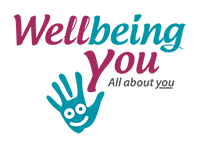
With no more copies of the tool to distribute I felt it proper to organise a review before embarking on reprinting. This was made possible through resources applied through a partnership with the Association of Guyanese Nurses and Allied Professionals, Croydon Voluntary Action and Healthwatches of Croydon and Merton and two sessions were held. One was at Vestry Hall in Merton for participants from Merton and Wandsworth and the other at Croydon Voluntary Action Resource Centre for Croydon and Lewisham residents.
Display flier on review here
Attended by 44 participants from community development organisations and residents from all four Boroughs, the review was intense. While it endorsed the overall importance of the tool in improving relationships between patients and clinicians it pulled the tool apart and suggested ways by which it could be made more user friendly. These were outlined on well documented feedback sheets and thanks to participants who volunteered to take notes.
The several sheets of feedback were carefully analysed and together with other details a review report was developed. That was only the beginning. The important task was to incorporate key sections of the report into appropriate sections of the tool to start development of Edition 3. That task required special IT skills which I did not have at the time. But luck was in our way. About a year later in May 2015 the newly appointed CEO of Healthwatch Croydon, HWC, Charlie Ladyman came across the review flier, requested the review report plus the tool and later termed the project as ‘healthwatchy’. The rest is history. She assigned one of HWC Officers Darren Morgan to assist with the required IT work to develop drafts of Edition 3.
Three consultations were carried out with Healthwatch Croydon Patient Experience Panel and participants at one of Asian Resource Centre’s Coffee Morning. Those consultations revealed that tool must be accompanied by some activity that will support people to change their behaviour. Another consultation was held with Commissioners, clinicians and the general public at Croydon Clinical Commissioning Group AGM in September 2016, thanks to the Ros Spinks, then Senior Community Engagement Manager for making that happen. Comments captured from clinicians were comprehensive and were incorporated to make the tool fit for its purpose. In November the updated draft was endorsed by the Executive of the Association of Guyanese Nurses and Allied Professionals who had applied resources at the start of the review.
Meetings were held with Dr Emily Symington to look through the draft to ensure it fits within the Shared Decision model.
Early in 2017 Sylvia was invited to the Together for Health Steering Group Meeting and the draft was circulated to members accompanied by questions that needed to be addressed regarding putting the tool into action. In May the tool was endorsed by Dr Agnelo Fernandez with suggestions on it’s final packaging.
In August 2018 with support from Together for Health Delivery Group proposal for expansion of use of tool was submitted for the Health Education England Health Innovation Award. Unfortunately bid was unsuccessful and search continued for resources to put it into meaningful action continued.
Meanwhile in September in an attempt to respond to recommendations made for the tool to the accompanied by practical activity that will support users to change their behaviour, Sylvia successfully acquired training as a tutor in Chronic Disease Self-Management or Expert Patient Programme, EPP. This was followed by delivering two sets of six-week EPP courses in January and July 2019.
At last in July 2019 Wellbeing You succeeded in getting an award from One Croydon Alliance Local Partnership Scheme to implement a project titled ‘Expansion of GP Partnership Tool within Croydon and environs. The project has three components:
- Distribution of printed tool to patients for use to test its effectiveness
- Upload tool onto websites of GP Surgeries and Pharmacies
- Develop a digital tutorial video that will circulated to create awareness and strengthen understanding among communities that are not fluent in English.
Project was launched on 25th February this year and a 6month report has already been submitted. Following are observations and lessons learnt:
- Implementation plans agreed with partners could change, therefore it is always best to have alternative options.
- Just because one manages their project at exceptionally low volunteer costs does not mean others do so it is always best to apply proper costs to project budget
- Judging from the growing number of partners that were willing to support is a good sign that more attention is being given to projects that promote learning and transformative change.
More importantly the LVP award is specific to addressing loneliness and isolation among the elderly through attendance at community events where they meet others, make new friends and have fun. Our project is different. Experience has shown that other silent causes of loneliness and feeling of isolation especially among people with multiple health conditions, even when surrounded by people, is that feeling of helplessness, anxiety or even fear. These result when one does not quite understand the nature of their illness, how to explain it when consulting with a doctor or nurse and engage in reaching a possible cure. These are the issues that the GP Partnership Tool project is trying to address in a sustainable way.
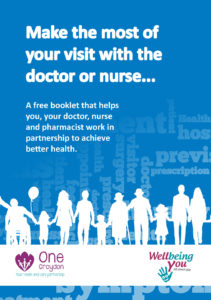
Current Version of the tool
